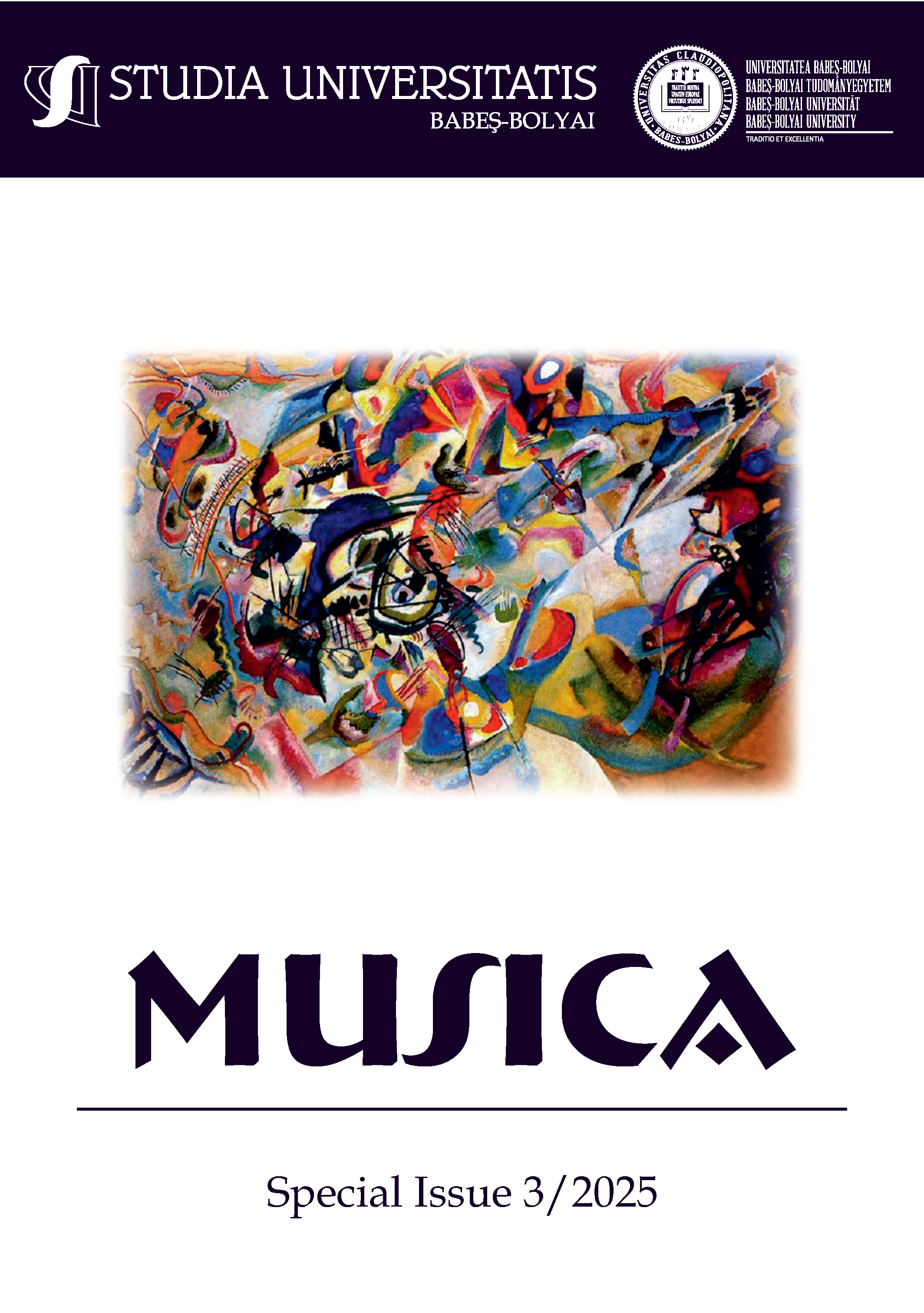ANALYSING SCHOENBERG’S PIANO PIECES OP. 19: HISTORY AND METHODOLOGY
DOI:
https://doi.org/10.24193/subbmusica.2025.spiss3.05Keywords:
Schoenberg, Six Little Piano Pieces op. 19, musical analysisAbstract
Schoenberg’s Op. 19 has become a classic in musical analysis. There are hardly any analytical approaches to twentieth-century music that have not been demonstrated using this cycle. Consequently, the body of research on Op. 19 also provides a good overview of analytical methods that were developed for, or have at least been applied to, atonal music.
References
1. Baker, James M. “Voice-leading in post-tonal music: Suggestions for extending Schenker’s theory”, in Music analysis, 9/2 (1990), 177–200.
2. Boge, Claire Louise. The dyad as voice in Schoenberg’s Opus 19: Pitch and interval prolongations, voice-leading, and relational systems, PhD, University of Michigan, Ann Arbor, 1985.
3. DeLio, Thomas. “Language and form in an early atonal composition: Schoenberg’s Op. 19, no. 2”, in Indiana theory review, 15/2 (1994), 17–40; again in idem, Analytical studies of the Mellen Press, 2017.
4. Erpf, Hermann. Studien zur Harmonie- und Klangtechnik der neueren Musik Breitkopf & Härtel, Leipzig, 1927.
5. Eybl, Martin. Die Befreiung des Augenblicks: Schönbergs Skandalkonzerte von 1907 und 1908. Eine Dokumentation, Böhlau, Vienna, 2004.
6. Forte, Allen. “Context and continuity in an atonal work: A set-theoretic approach”, in Perspectives of new music 1/2, 1963.
7. Forte, Allen. The structure of Atonal Music. Yale University Press, New Haven, 1979.
8. Grandjean, Wolfgang. „Form in Schoenberg’s Op. 19, no. 2”, in Zeitschrift für Musiktheorie 8/1 (1977), 15–18, at p. 18: “Nimmt man die tonalen Hörgewohnheiten des europäischen Hörers zum Maßstab, die er verinnerlicht hat und von denen er sich nur schwer freimachen kann, dann ist die harmonisch-tonale Interpretation wohl gar nicht so abwegig.”
9. Hicken, Kenneth L. “Aspects of Schoenberg’s music in the evolution of harmony suggested by the harmonic organisation of Op. 19”, in Die Wiener Schule in der Musikgeschichte des 20. Jahrhunderts. Lafite, Vienna, 1986, 99–107.
10. Kramer, Jonathan. The Time of Music: New Meanings, New Temporalities, New Listening Strategies. Schirmer Books, New York, 1988, 170–183, chapter 7: “Analytic Interlude: Linearity and Non-Linearity in Schoenberg’s Op. 19, no. 1 and Webern’s Opus 29, First Movement.
11. Leichtentritt, Hugo. „Schönberg and tonality“, in Modern Music 5/4 (1928), 3–10; idem, „Arnold Schönbergs Op. 19“, in Die Musik 25 (1933), 405–413.
12. Moßburger, Hubert. „Hermeneutische Analyse: Arnold Schönberg: Klavierstück Op. 19 Nr. 2“, in Musikalische Analyse: Begriffe, Geschichten, Methoden (Grundlagen der Musik). Laaber-Verlag, Laaber, 2014. 185–217.
13. Schoenberg, Arnold. Theory of Harmony, trans. Roy E. Carter. University of California Press, Berkley/Los Angeles, 1978, 421. “Auch die Lage ist bindend; sowie ein Ton versetzt wird, wechselt die Bedeutung, hört die Logik und Brauchbarkeit auf, scheint der Zusammenhang zerrissen.”
14. Schönberg, Arnold. Harmonielehre (1911), 3rd ed. Universal-Edition, Vienna, 1922.
Downloads
Published
How to Cite
Issue
Section
License
Copyright (c) 2025 Studia Universitatis Babes-Bolyai Musica

This work is licensed under a Creative Commons Attribution-NonCommercial-NoDerivatives 4.0 International License.



